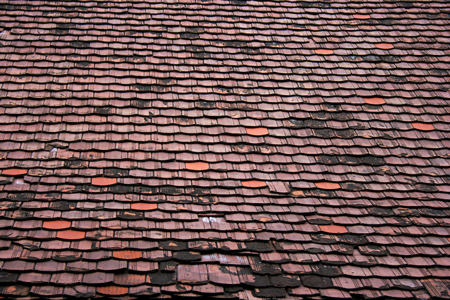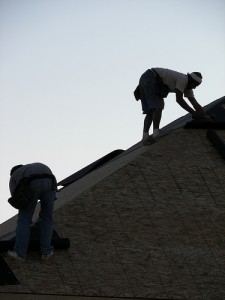Archive for July, 2010
Marlins Stadium Retractable Roof
Florida Marlins stadium in Miami scheduled to open in April 2012 will have the nation’s first retractable roof earning the “Leadership in Energy and Design” certificate. The US Green Building Council has given credits for some of the stadiums environmentally friendly designs. In addition to the retractable roof, there will be 2 salt water aquariums behind home plate. Both will be 36 inches high, one is 34 feet long and will hold 600 gallons of water and the other is 24 feet long with 450 gallons of water. Both tanks will have bullet proof glass in front of and in back of the acrylic panels.
The stadium is in East Little Havana, in the same neighborhood as the former orange bowl. This $642 Million stadium will have 37,000 seats and about 1,000 designated standing room. Providing a comfortable environment keeping out the rain and extreme heat that have kept attendance low at the existing Sun Life Stadium.
You can see complete sketches and simulations of what to expect for the new stadium at the sales headquarters overlooking the construction site on NW 7th St. or you can view all stages of construction from the new ballpark webcam at mlb.com . The retractable roof construction will be the focus for the next 11 months.
Green Roof Construction Time-lapse
Great Time-lapse of a Green Roof being Constructed. Make sure to check out the video description for more details.
Via (YouTube)
Prototype House With Smog Reducing Roof
Lancaster California is home to the first battery powered, solar paneled house with roof tiles claiming to reduce as much pollution as the average car creates annually.
The 4 bedroom, 2 bath, 1519 square foot home, received the roof tiles embedded with a catalyst that helps reduce smog causing nitrogen oxide pollution when the catalyst is exposed to sunlight.
This prototype home was built by KH Homes and BYD, a manufacturer of clean energy technologies, providing the solar panels, solar energy batteries and electric vehicle outlets, and the roof tiles manufactured by MonierLifetile.
Meeting the EPA’s energy star guidelines, eventually this home will be offered for sale in the low $200,000 range.
Historic Building Gets Solar Panels
In Philadelphia, the Bourse building built in 1895, received 210 solar panels. Estimated first year savings of $8,000, the system is expected to pay for itself within 5 years.
The 30,000 square foot roof supports the panels by a racking system and ballasts so there is no penetration on the historic roof. The panels avoided the skylights and shadows cast by neighboring buildings, while also not being visible by street level.
In the early 1980’s the Bourse building was converted to a 10 story complex with 75+ tenants of offices, shops and food outlets, supporting nearly 1 million visitors per year.
Read more at philly.com (Philadelphia Enquirer)
"Pay It Forward" Donations

3 Autistic women in Nutly New Jersey received much needed help with their roof from NRCA’s new Pay It Forward program.
A member of the Nutly Citizens Special Needs committee contacted the National Roofing Contractors Association and explained the need for 18 squares of roofing material for the sister’s home. Two of the seven companies signed up to volunteer came forward, GAF Materials Corp. in Wayne, N.J. donated the shingles and Allied Building Products Corp. of East Rutherford, N.J. helped deliver materials.
If you would like to placed on NRCA’s Pay It Forward program list, please contact them through their website ncra.net. Companies are not obligated to give donations, but you will receive notification of people in your area that need help.
Volunteer Teens Re-Roof House
In east Atlanta Georgia, a group of teens are on the roof with hammers. The students ranging from 6th through 12th grade, and adult volunteers, came out to take part in the yearly project. With 250 volunteers of the Metro Atlanta Project, this is one of the dozen homes these teens plan on re-roofing this summer.
For one week out of the summer, these youths, mostly from area church’s, and sponsored by the Northside Methodist Church, re-roof the homes of the elderly and low income families.
The project has been going on for 12 years with many of the teens returning yearly to volunteer in the sweltering heat to help those in need.
For More Information, Please Visit MetroAtlantaProject
2 Billion for Solar Plants

Saturday on his weekly radio program, President Barack Obama announced that the government will be giving close to 2 Billion dollars for new solar power plants.
The president hopes to increase the use of renewable energy and create thousands of jobs in America.
The plan is to bring new industry to the United States and compete aggressively to make sure we secure the jobs and industries of the future.
The two solar companies that will share the money is Abengoa Solar, building a new plant in Arizona and Abound Solar Manufacturing who will be building two plants, one each in Colorado and Indiana, together, the companies will create more than 2000 construction jobs and 1500 permanent jobs.
Read more at news.yahoo.com
Roof Leaks

If you’ve noticed any evidence of a roof leak (dripping water, mold, or water damage in the floors and ceilings,) it’s a good idea to inspect your home for potential sources of water entry.
Starting with the ceiling of the room in which the leak is occurring, work your way up to the top floor of your home to follow the trail of water damage. Common problems are loose connections at the point of entry for vents and chimney pipes, where water can seep through. Also look for loose seams at the joints where planes of your roof converge. A leak occurring at another spot away from these obvious areas indicates a compromise to the integrity of the roofing material itself.
Once you’ve come as close to the source of the problem as you’re able from the inside of your home, you’ll need to localize the leak in order to prevent further seepage. Dripping water can be directed into a bucket by tacking a string to the ceiling for it to run down. If you are relatively sure of leak source but don’t see a visible drip, try drilling a hole at the entry point to release the water behind the plaster.
Your next step will be to move outside and identify where water is coming in. Signs of leakage will vary depending on the type of roofing you use, but investigate all visible irregularities or past leak repairs. Roof leaks can cause severe structural damage if left unattended, so be sure to take the problem seriously.
Recreating History for U. VA Rooftop
University of Virginia is undergoing a restoration of Thomas Jefferson’s innovative design of a flat roof over the Academicals Village.
The original roof built in 1817 was designed flat so the water was diverted through gaps in the wood decking and into gutters and cisterns. Jefferson designed his roofs after the French architecture he observed in the 1780’s.
Within 10 years, a gabled roof was placed over Jefferson’s original roof due to leakage.
The new technology, a rubber membrane roof will be installed over a wood structure then a top deck made of hardwood. They will be able to recreate Thomas Jefferson’s original plan with flat roofs creating a raised open walkway with railings. Pedestrians will be able to walk from one pavilion to the other and enjoy the lawns and gardens.
The restoration project is being handled by carpenters from Facilities Management, with the only outside roofing contractor, W.A. Lynch Roofing Co., who will be installing the rubber membrane. They expect the new roof and railings to be completed by mid august.
Read more at newsleader.com
Travelers Scams – Roofing Nightmare
An increasing trend seems to be a group of well dressed, polite, salesmen who pull up to your home in nice clean vehicles and make empty promises to fix your roof, driveway or other home repairs. Law enforcement refers to these scam artists as “travelers”.
The travelers often deceive homeowners into making unnecessary repairs. They make claims of doing your repairs quickly and cheap, offering amazing deals that are often hard to pass up. Problems soon arise when the homeowner realizes the quality of the job is severely substandard and they have no way to contact the contractors for any resolution.
Consumers can protect themselves in a variety of ways, first of all be wary of anyone coming to you and asking to make repairs, also remember the old adage, “If it sounds too good to be true, it probably is”. Get the name of the contractor, their address and phone number, ask for licenses and references. Check with the Better Business Bureau in your area to see if there have been any complaints filed on this company. Also, check online or in the yellow pages to verify if this is a real business. There are plenty of legitimate companies out there willing to give you an estimate and complete the work in an ethical and professional manner.
Source: Consumer Affairs











